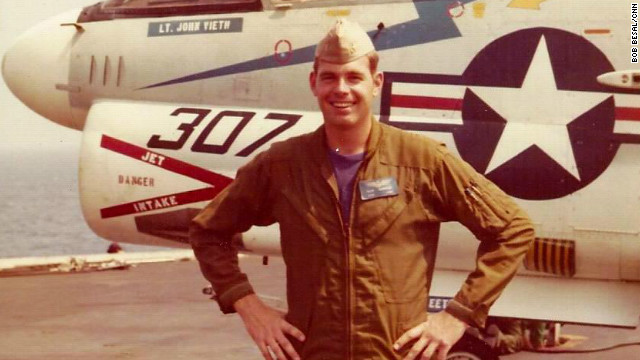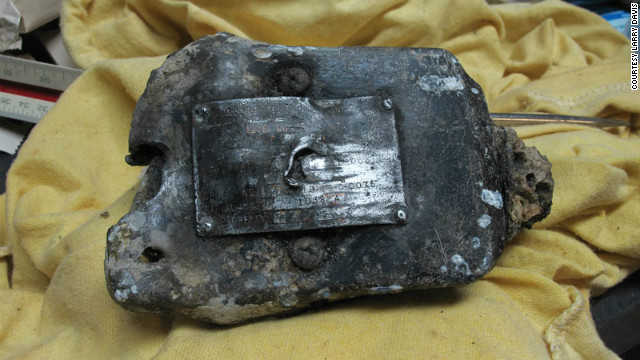Jade Mountain St. Lucia: Where All Rooms Have Infinity Pools
Located in the eastern Caribbean Sea,
Jade Mountain in St. Lucia is one of the most incredible resorts the Sifter has seen. Each room has only three walls and a private infinity pool with stunning panoramic views of the beautiful Caribbean. A tropical oasis, this slice of heaven doesn’t come cheap, with nightly rates ranging from $950 up to $2,700 US. One can dream though!
Check out the gallery of images below along with information on the resort and rooms. Sigh…
JADE MOUNTAIN, ST. LUCIA
Rising majestically above the 600 acre beach front resort of Anse Chastanet, Jade Mountain is a cornucopia of organic architecture celebrating St Lucia’s stunning scenic beauty.
Architect owner Nick Troubetzkoy has expanded upon his philosophy of building in harmony with Caribbean nature in his creation of Jade Mountain. The bold architectural design – individual bridges leading to exceptional infinity pool sanctuaries and rugged stoned-faced columns reaching towards the sky – makes Jade Mountain one of the Caribbean’s most mesmerizing resort experiences.
Expect grand sweeping spaces where bedroom, living area and an extravagant private infinity pool glide into one another to form extraordinary platforms floating out into nature. With the fourth wall entirely absent, Jade Mountain’s sanctuaries are stage-like settings from which to embrace the full glory of St Lucia’s Pitons World Heritage Site, and of course, the eternal Caribbean Sea.
Wrapped around an infinity pool with a dazzling kaleidoscope of colors, the Jade Mountain Club caters exclusively to resident guests, celebrating James Beard Award winner, Chef Allen Susser’s “Jade Cuisine.” Hovering in space above the Jade Mountain Club is the Celestial Terrace, perfect for sunset cocktails or star-gazing.
A wide range of spa services can be enjoyed in the privacy of the Jade Mountain sanctuaries or at Kai en Ciel, Jade Mountain’s boutique spa and fitness studio.
The Jade Mountain sanctuaries are deliberately techno-free; there are no telephones, radio or television. Internet access is available at reception for those who simply cannot let go of the outside world as the resort encourages you to! The resort major domos and a dedicated resort team ensure outstanding service around the clock.
Enjoy the exclusivity and privacy of Jade Mountain with all of Anse Chastanet’s restaurants, bars, boutiques, art gallery, spa, scuba, bike and watersports facilities as well as 2 soft sand beaches available to Jade Mountain guests at all times.
THE INFINITY POOLS AT JADE MOUNTAIN
STAR Infinity Pool Sanctuaries
The infinity pool sanctuaries which are between 1400 – 1800 square feet and with infinity pools averaging 450 square feet.
MOON Infinity Pool Sanctuaries
The infinity pool sanctuaries which are between 1600 – 1950 square feet in size with infinity pools averaging 650 square feet.
SUN Infinity Pool Sanctuaries
The infinity pool sanctuaries with the most commanding 270 degree panoramic view, with over 2000 square feet in size, and in particular elevated positions. The infinity pools are up to 900 square feet in size. The combination of additional square footage and amazing panorama makes these sanctuaries the most desirable for all those seeking the ultimate experience.
GALAXY Infinity Pool Sanctuaries
These are the sun sanctuaries JD1 and JE1 which are on the highest level of JADE MOUNTAIN and enjoy the most commanding panoramic views plus biggest square footage. Because we have been asked on many occasions to guarantee these two suites for arrival, we have decided to create a specific category for them: GALAXY
All pools feature shallow water lounging areas in addition to a large swimming area. They have been surfaced entirely in one-of-a-kind glass tiles, which have been specifically designed for JADE MOUNTAIN. The glass tiles feature a sophisticated, textured iridescent surface on one side and a smooth but undulating surface on the other.
Each of the infinity pools has its own individually designed glass tile color scheme which is then carried on into the individual bathrooms, giving each suite its own unique – and rather bold – personality. The glass tile texture is complex in reflective and prismatic ways with each piece of tile unique due to their custom hand crafted fabrication.
The infinity pools are equipped with fibre optics to illuminate them at night. Guests have the option of allowing the system to cycle through a range of colours or setting it to one particular shade.
The water in JADE MOUNTAIN’S infinity pools is purified by a highly sophisticated system, the primary mechanical filtration being through a zeolite sand filter and with the primary sterilization being ozone. Each pool receives individually filtered and sterilized water, and pool water cycles through the sterilization and filtration facilities approximately six times per day.
JADE MOUNTAIN ACCOMMODATIONS
All sanctuaries feature 15ft high ceilings and have the 4th wall open to the views. All other aspects, layout and size vary from sanctuary to sanctuary. In addition to locally made fine tropical wood furniture an eclectic collection of furniture has been placed in the sanctuaries giving each one of them their own individualistic ambiance.
The living areas of the rooms are finished with more than 20 different species of tropical hardwood flooring and trims harvested in an environmentally correct way. JADE MOUNTAIN’s technicians actually visited the Rain Forest of Guyana and personally chose which trees to be used. A multitude of hardwoods has been used including Purpleheart, Greenheart, Locust, Kabukali, Snakewood, Bloodwood, Etikburabali, Futukbali, Taurino, Mora and Cabbage Wood.
The interior walls are finished in a crushed blush toned coral plaster quarried in Barbados. The exterior is in massive rough concrete and imbued with locally quarried stone, with all the window openings framed with massive 3 x 18 inch tropical wood mullions and muntins which are in-filled with movable jalousie louvres. The flooring exposed to the weather is finished in quarried coral tile from neighboring islands.
DINING AT JADE MOUNTAIN
Breakfast
Breakfast is a glorious time of the day in Jade Mountain. Your choices are based on ingredients locally farmed, harvested and fished. Taking all the best St Lucian local flavor has to offer and capturing it on the plate. Freshly squeezed exotic juices, home made granola, hand picked tropical fruits, farm fresh eggs and artisan breads.
Lunch
The flavors that take shape are modern yet simple for the palate to comprehend: Crispy, refreshing salads, exciting healthy sandwiches, the best Burger in the Caribbean, and pristine fish and seafood.
Dinner
Dinner at Jade Mountain Club reflects seasonal changes of flavor with influences throughout the Caribbean. Jade cuisine is a modern fusion cuisine with cultural influences and unique techniques resulting in a wonderful taste adventure.
In Your Sanctuary
Every meal, any meal, any time! Let us not disturb you, but help you to fulfill your needs and wants in your own personal sanctuary. We cater to the mind, body, spirit and senses of our guests. The service itself always reflects a sense of warm professionalism and genuine hospitality.
The Celestial Terrace
One of the most breathtaking locations imaginable, the Celestial Terrace offers an unforgettable sunset panorama. Once night has fallen, watch the night sky and look out for shooting stars . Let the culinary team create a private dining experience for you on the Celestial Terrace.
A Spoonful of Paradise Culinary Events
Chef Allen and his culinary team have created culinary weekend events to showcase St.Lucia’s culinary heritage: Cooking In Paradise, Mango Madness, Spices of the Caribbean, Discover Chocolate
Culinary Resources
The 600 acre resort estate includes the old colonial plantation of Anse Mamin. Originally a sugarcane plantation in the 18th century, its fields were eventually turned towards cocoa bean production. The cocoa trees are still numerous on the grounds for guest to see and for us to produce our own estate chocolates. Anse Mamin is a wonderful organic resource for our menu, including turmeric, cashews, tamarind, mango, avocado, oranges, tangerines, guavas, papaya, coconut, breadfruit, yams and sweet potatoes.
Our organic farm EMERALD ESTATE in the Soufriere hills plays a major role also. From vanilla beans, bay leaf, nutmeg trees, cinnamon trees, numerous varieties of mango, sour orange and coconut trees, the Emerald farm also grows leaves, micro greens, vegetables, and herbs for the restaurant. Our close relationship with many fishermen in town as well as up and down the coast gives us access to the freshest and most pristine fish in St Lucia.
DAILY RATES AT JADE MOUNTAIN
For package deals, please visit
Jade Mountain



































